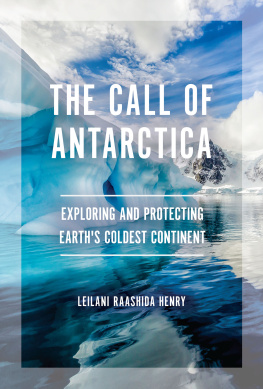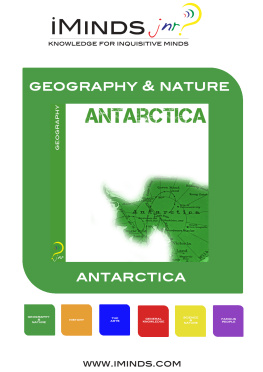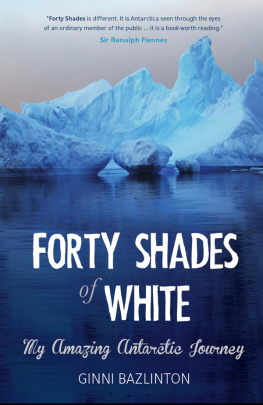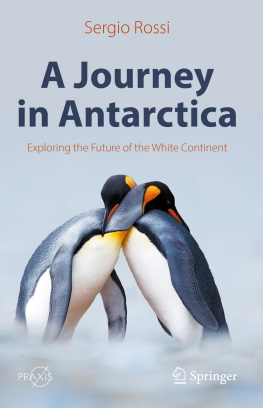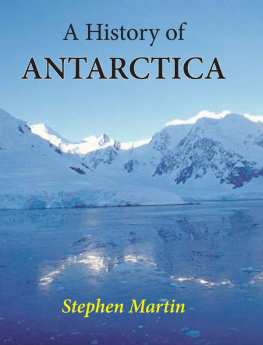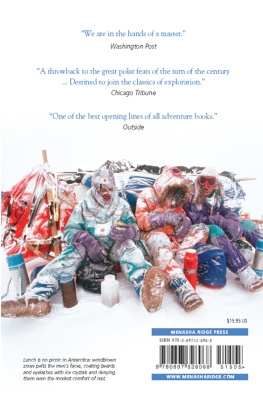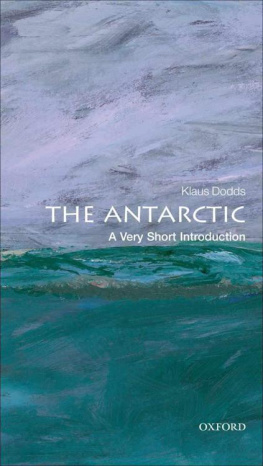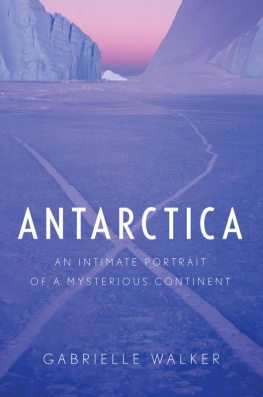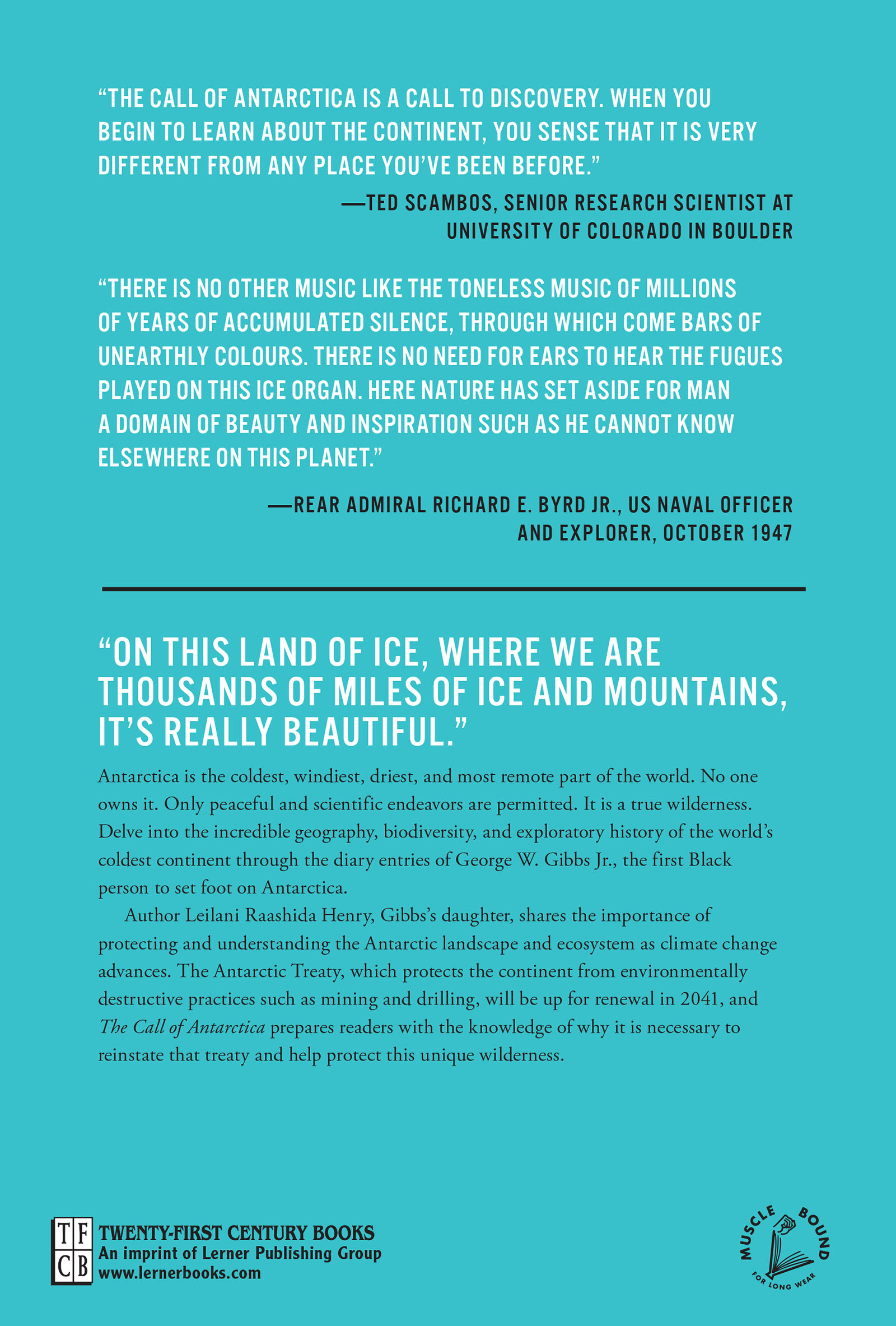This book is dedicated to a healthy planet, healthy people, and a healthy connection between Earth and all its beings.
Thank you to my friends, family, and colleagues who supported and endured my years of focus on this project. A special thanks to Dr. Ted Scambos, Antarctic scientist, who helped make this book possible.
Text copyright 2022 by Lerner Publishing Group, Inc.
All rights reserved. International copyright secured. No part of this book may be reproduced, stored in a retrieval system, or transmitted in any form or by any meanselectronic, mechanical, photocopying, recording, or otherwisewithout the prior written permission of Lerner Publishing Group, Inc., except for the inclusion of brief quotations in an acknowledged review.
Twenty-First Century Books
An imprint of Lerner Publishing Group, Inc.
241 First Avenue North
Minneapolis, MN 55401 USA
For reading levels and more information, look up this title at www.lernerbooks.com.
Main body text set in Adobe Garamond Pro Regular.
Typeface provided by Adobe Systems.
Library of Congress Cataloging-in-Publication Data
Names: Henry, Leilani Raashida, author.
Title: The call of Antarctica : exploring and protecting earths coldest continent / Leilani Raashida Henry.
Description: Minneapolis, MN : Twenty-First Century Books, [2022] | Includes bibliographical references and index. | Audience: Ages 1318 | Audience: Grades 1012 | Summary: Author Leilani Raashida Henry, daughter of the first person of African descent to go to Antarctica, recounts her fathers expedition while educating on the incredible geography, biodiversity, and history of the continent Provided by publisher.
Identifiers: LCCN 2020044845 (print) | LCCN 2020044846 (ebook) | ISBN 9781541560956 (library binding) | ISBN 9781728401607 (ebook)
Subjects: LCSH: AntarcticaJuvenile literature. | AntarcticaDiscovery and explorationJuvenile literature. | BiodiversityAntarcticaJuvenile literature.
Classification: LCC G863 .H46 2022 (print) | LCC G863 (ebook) | DDC 919.89dc23
LC record available at https://lccn.loc.gov/2020044845
LC ebook record available at https://lccn.loc.gov/2020044846
Manufactured in the United States of America
1-46395-47485-6/10/2021
Contents
Introduction
Into the Ice
Chapter 1
Unknown Southern Land
Chapter 2
Byrd and the Bear
Chapter 3
At the Bottom of the World
Chapter 4
Secrets of the Ice
Chapter 5
Flora and Fauna
Chapter 6
Human-Made Trouble
Chapter 7
Working and Living in Antarctica
Foreword
by Dr. Ted Scambos
T he call of Antarctica is a call to discovery. When you begin to learn about the continent, you sense that it is very different from any place youve been before. Antarctica is a part of Earth, and yet its unearthlya vast, ice-covered land where all the rules are different. For many, the strangeness of it all inspires them to go there to see it firsthand, and often one visit is not enough. The adventure of traveling there, the landscape, and fantastic ice structures create excitement, a sense of adventure, and a deep appreciation of the scale, the silence, and the grandeur of the southernmost land. No matter how you visit the ice sheetsailing along its coast, on a research expedition, striving to reach the continents farthest points, or simply working at a research stations galleythe feeling of wanting to see it again is the same. Even when explorers lives were threatened by the extreme conditions and hardships, they wanted to return.
Antarctica also inspires a more personal discovery, one that you dont anticipate. Whether you go as part of a team of researchers or with a group of excited tourists, you will find not only a unique, beautiful place but also something new about yourself. The scale of Antarcticaits silence, the beauty of its natural landscapelead you inward as well as onward. On a scientific expedition, the relentless work and the close social interaction of the field team test you. Isolation and the many other challenges that accompany exploration are all part of an internal survey as well. You discover new things about who you are, how far you can reach, and how you fit in. Even if you are a solo adventurer, you encounter the same questions. You ask yourself, How can I be a better part of we ?
This book is a brief introduction to the continent of Antarctica and its surrounding ocean, an overview of its history, and a sample of the science behind how the continent works. It touches upon Antarcticas geology, biology, and environment. As a way of discovering more about the continent, we follow the story of a member of a past Antarctic expeditionthe American George W. Gibbs Jr. In 1940, at twenty-three years of age, Gibbs was the first Black man to set foot on the continent.
Gibbs experienced both the inner and outer kinds of discovery on his journey. He had the adventure of his lifetime, and he embraced his role as a part of a diverse team. He saw landscapes and wildlife that awed him. He felt the burn of racial discrimination, but he also knew interracial teamwork and harmony. He saw how other nations put less importance on skin color and more importance on fellowship. These experiences shaped him and set him on a course to become a civic leader and civil rights advocate in his state and nation. Above all, his example shows the power of outlook, attitude, and optimism. No matter the situation, Gibbs steered clear of resentment and focused on experiences and on being present. He appreciated every aspect of his journey, inward and outward, and spoke about the experience for the rest of his life.
He felt the call of Antarctica.
Ted Scambos is a senior research scientist at the University of Colorado in Boulder. He has been on twenty expeditions to Antarctica and the Southern Ocean to study the ice and the impacts of climate change.
Introduction
Into the Ice
T he ship bucks like a wild horse. To the crew on board, it seems the bucking will never end. Its impossible to walk on deck without holding on or falling. The fog is so thick that the men cant see their hands in front of their faces. When the grinding of the ships engine stops, the silence is startling.
Forty US Navy crew and twenty-two civilians are aboard the USS Bear , a three-mast, sixty-six-year-old wooden sailing ship, modified with a new diesel engine and steel sheath to protect the hull from the ice. The fog is so thick that the men can hardly see their hands in front of their faces. The water is about 31F (0.5C)just above the freezing point for salt water. The freezing spray covers everything and makes the deck slippery underfoot. They havent had a warm, cooked meal in days, only sandwiches. The seas have been too rough for the galley. Gray, white, and blue are the colors of the landscapereflected in the sky, the clouds, the salt water, and the fog.
Voyagers to Antarctica are treated to a landscape surprisingly full of colors.
Days grow longer and longer as the nights shrink to nothingbut this doesnt trouble the crew. Everyone aboard the US Navy ship is too excited to sleep anyway. The purple, pink, and tangerine sunrisesactually sunsets that never quite finishperiodically fill the sky above an endless indigo-blue sea. The suns halo is a pastel rainbow. But now, moving slowly and carefully into the ice pack, an eerie calmness takes over.

